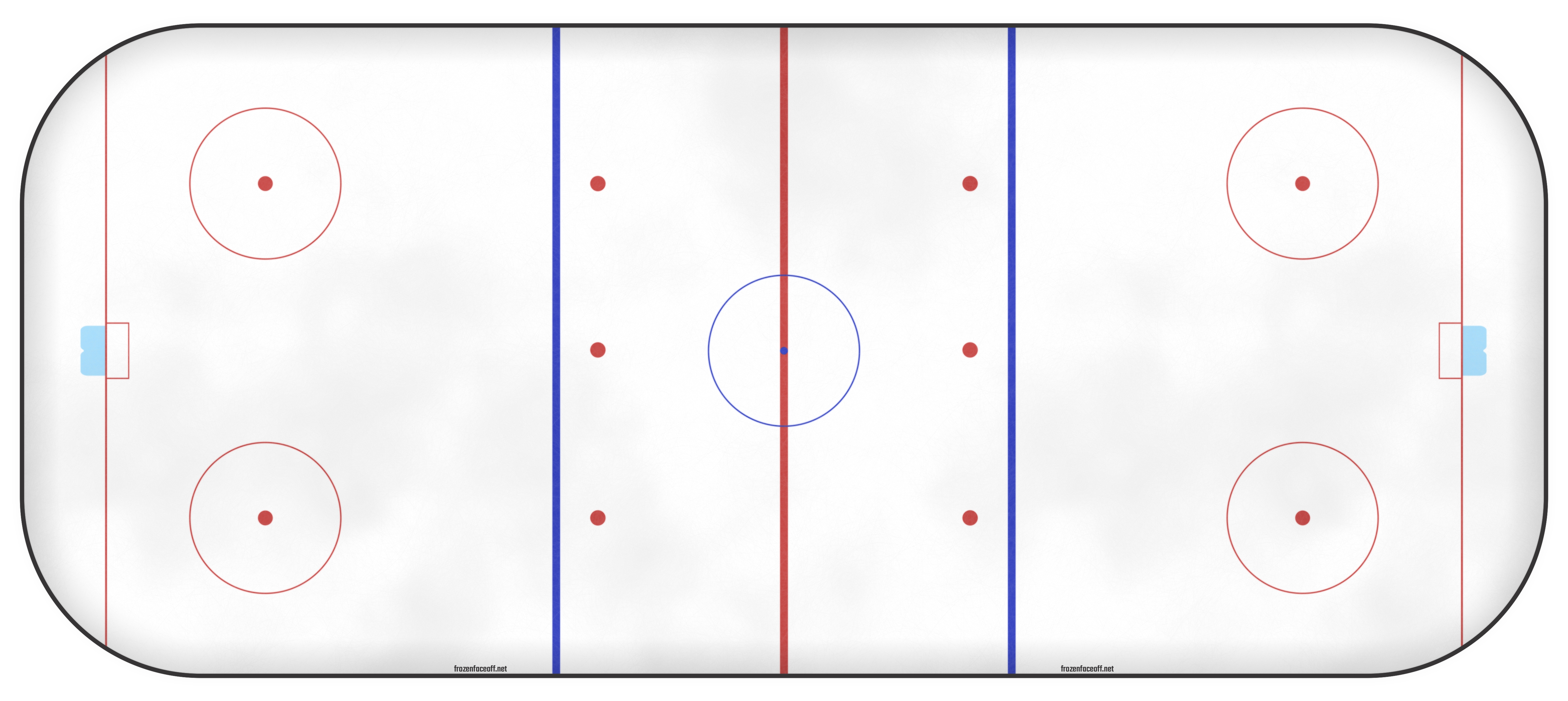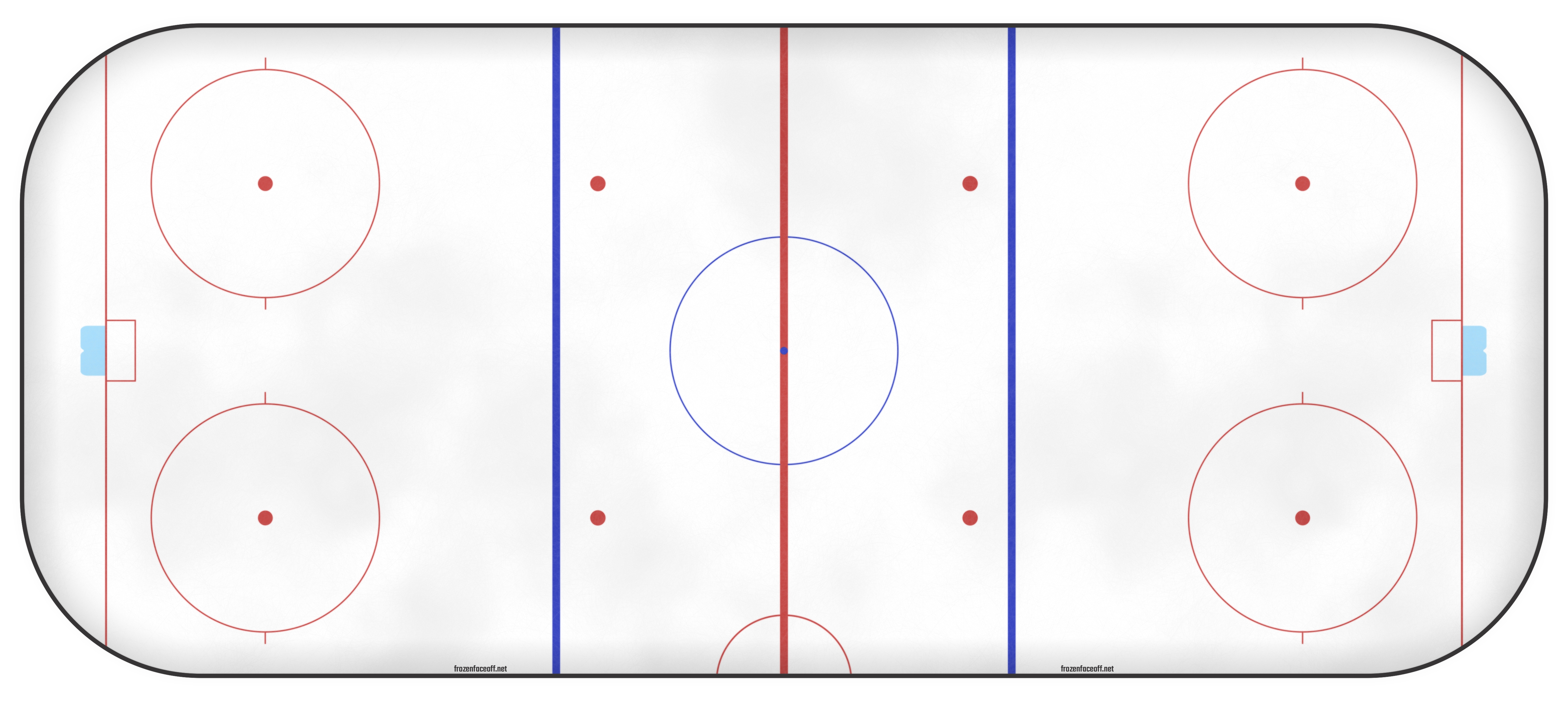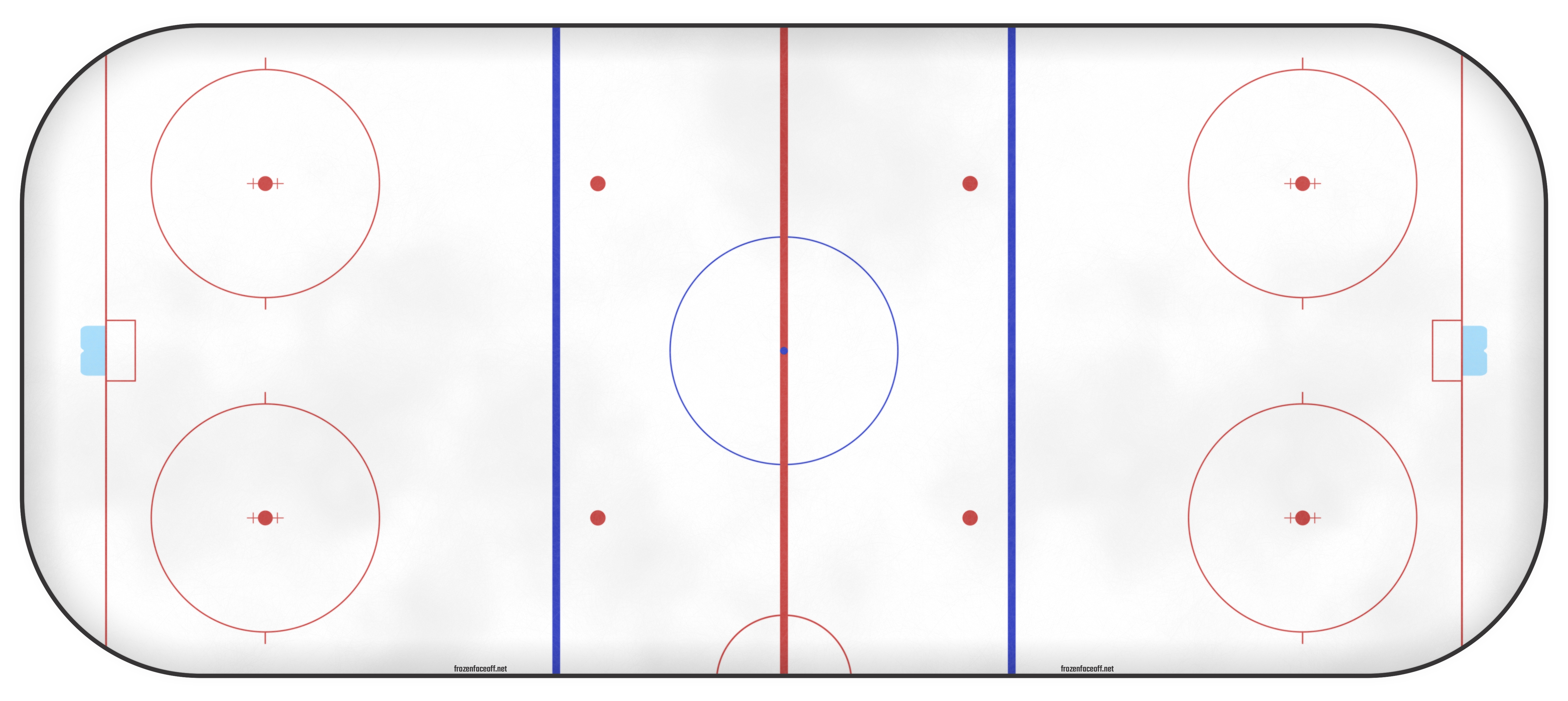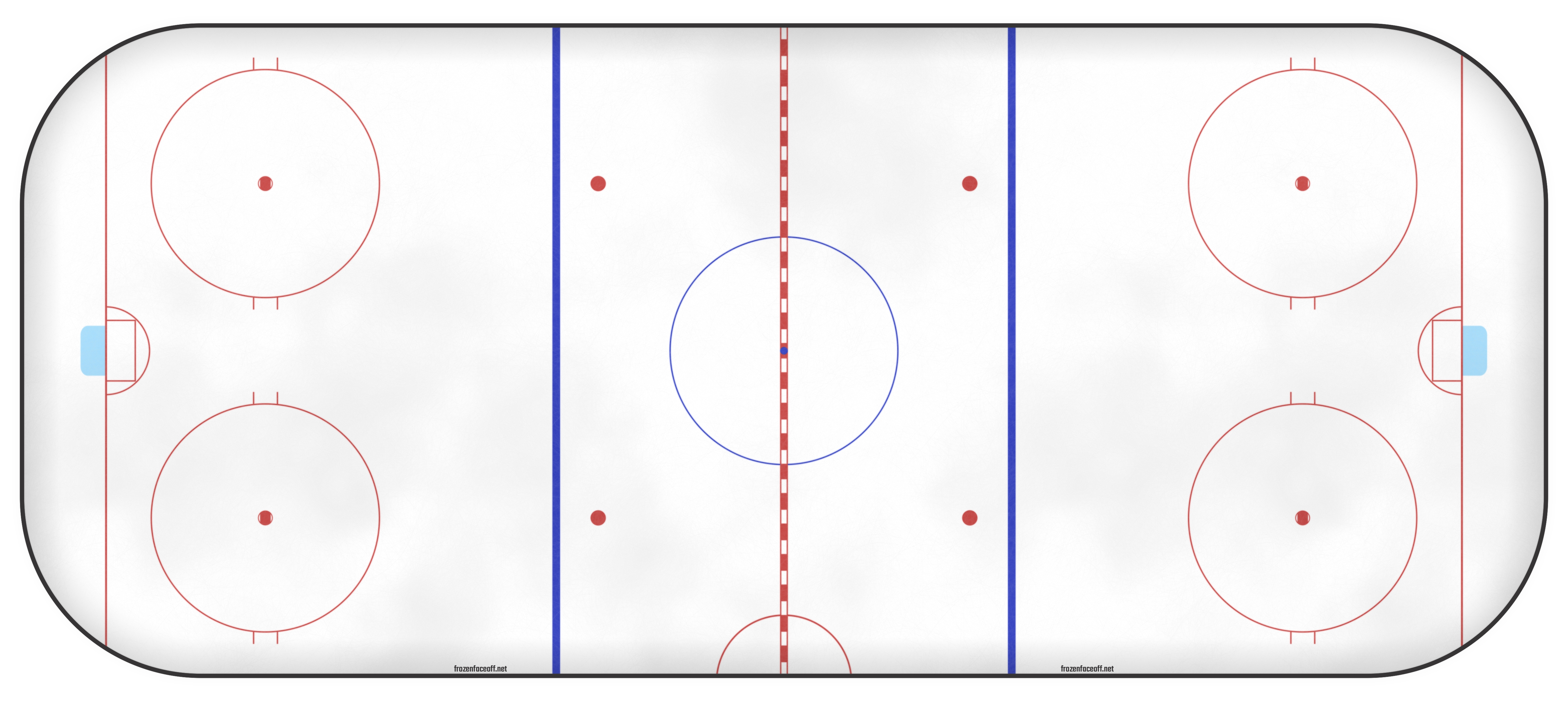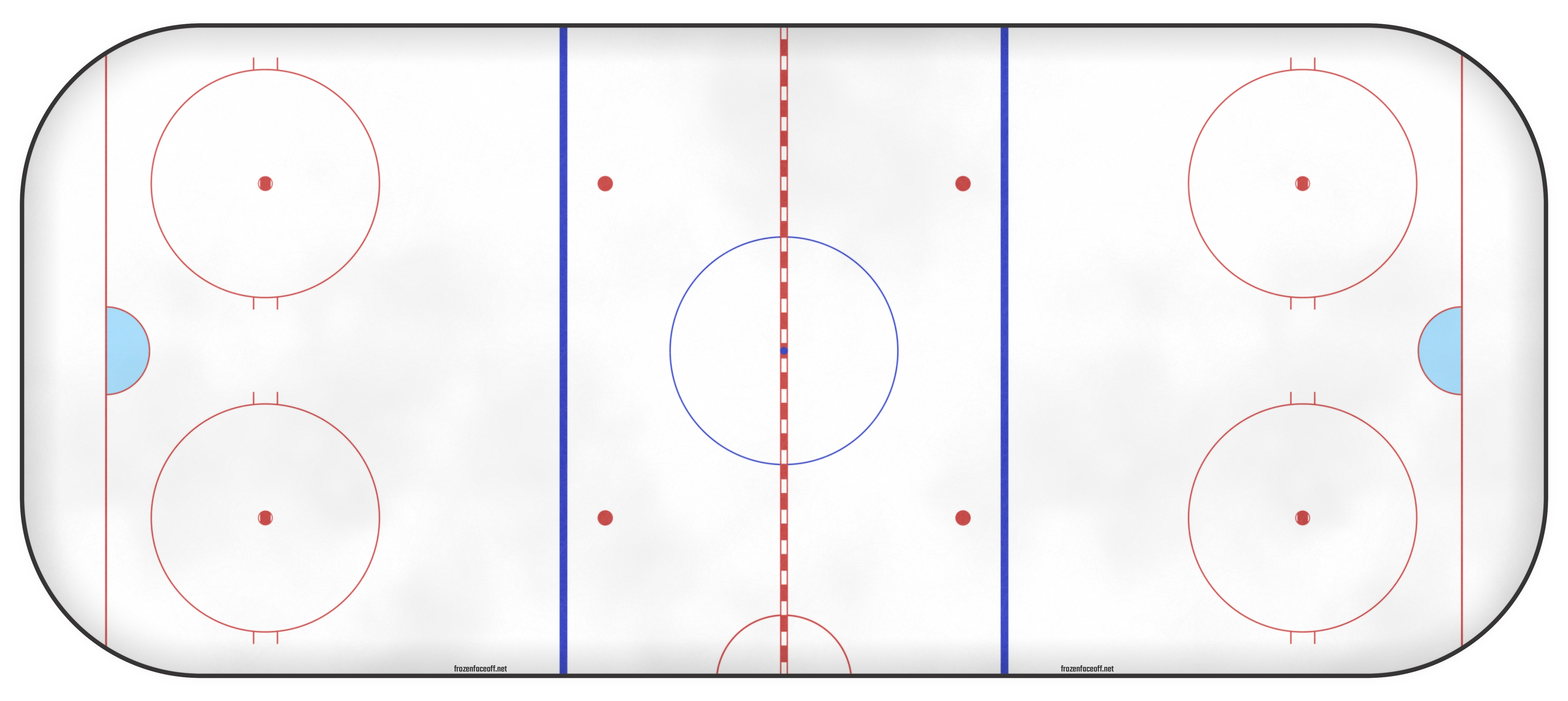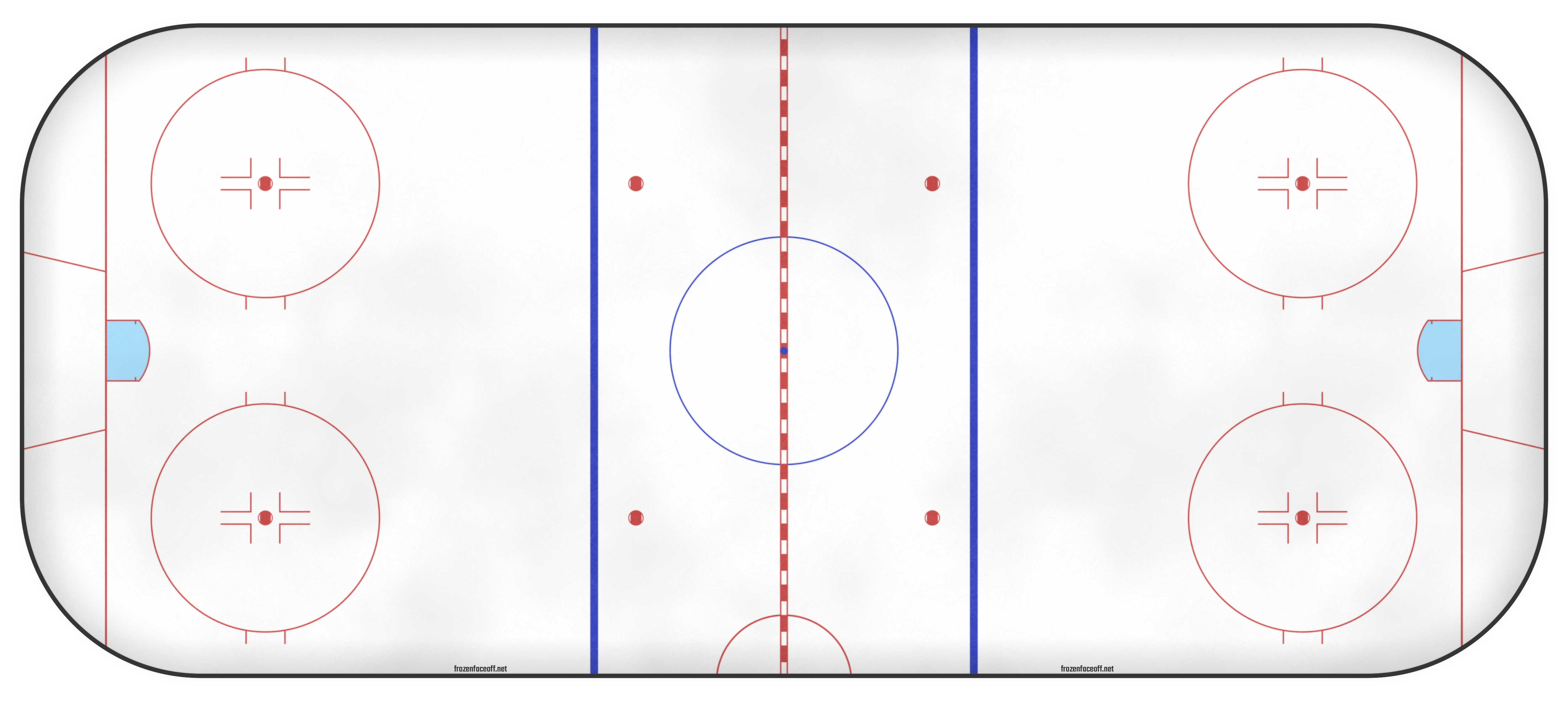Every player is well aware of the rink he is playing on. They know the length of the ice and the amount of room they have to play in the neutral zone. Although every rink in the NHL is now virtually the same with the exception of logos and ice quality, it wasn't always that way. In this feature, we will take a look at how the rink has been adapted over the years. You may be surprised at all of the changes, both large and small. We have upgraded our rink history to now date all the way back to the 1917-1918 season.
Throughout the history of the NHL, there have been many variances from rink to rink such as Edmonton's center ice facing the players benches or the shorter rinks like the one in the Chicago Stadium. There were quite a few of these abnormalities, but for the sake of the overall history of the NHL, the following graphics will be based upon the typical 200 by 80 foot rink.
While we have tried to account for every known change to the rink and we worked through many corrections that had been submitted the first time around, there are so many subtle changes that we could have missed something along the way. Please email us at admin@frozenfaceoff.net if you see an error.
Because of the size of the images, we will split this up into two parts for a better loading experience. To skip directly to Part 1 (NHL's first rinks up to 1949), click herehttps://www.thefaceoff.net/2019/10/nhl-rink-history-part-1.html.
Part 2 - Paint It White
1949-50 1950-51 Seasons
The entire surface is painted white following the popularity of the white goal area among fans and officials.
1951-52 through 1960-61 Seasons
The size of the goal crease is increased to 8 feet by 4 feet. Faceoff-circles were expanded to 30 feet in diameter and hash marks were added to the defensive zone circles. The referee's crease was also added. Its position would vary from rink to rink.
1961-62 through 1963-64 Seasons
"Crosshairs" added to face-off dots in defensive zones.
1964-65 through 1972-73 Seasons
Though some teams had already started using checkered red lines, in 1964 they became an official element to the rink. Its purpose was to help TV viewers distinguish the red line from the blue lines. This would become less important once color TV became widely available.
1973-74 through 1981-82 Seasons
Cross-hairs updated to T shaped markings.
1982-83 through 1985-86 Seasons
Double hash marks and modified defensive zone face-off dots replace previous markings.
1986-87 through 1989-90 Seasons
A round goal crease was added, surrounding the traditional rectangular crease.
1990-91 through 1994-95 Seasons
The neutral zone would shrink from 60 feet down to 58 feet.
1995-96 Season
The goal area (inside the net) was painted white.
1996-97 through 1997-98 Seasons
L-Shaped positioning marks are added to the two face-off spots in each defensive end.
1998-99 through 2000-01 Seasons
The goal crease is changed from a semi-circle to the current crease shape. The neutral zone is changed from 58 feet wide to 54 feet.
2002-03 through 2003-04 Seasons
The neutral zone face-off dots now match the style of the defensive zone dots.
2005-06 through 2013-14 Seasons
After the 2004/2005 Lockout, several changes were made to the rink. The neutral zone was shortened to just 50 feet. Trapezoids were also added behind the goal lines to limit the area in which goaltenders could touch the puck behind the goals.
2014-15 through Present (as of the 2018-19 Season).
The hash marks outside the end zone circles were moved from 3 feet to 5 feet 7 inches separation. Finally, the trapezoid grew by two feet from each goal post to create what is now the current rink layout for all 31 NHL teams.
Go back to Part 1: Vintage Rinks


